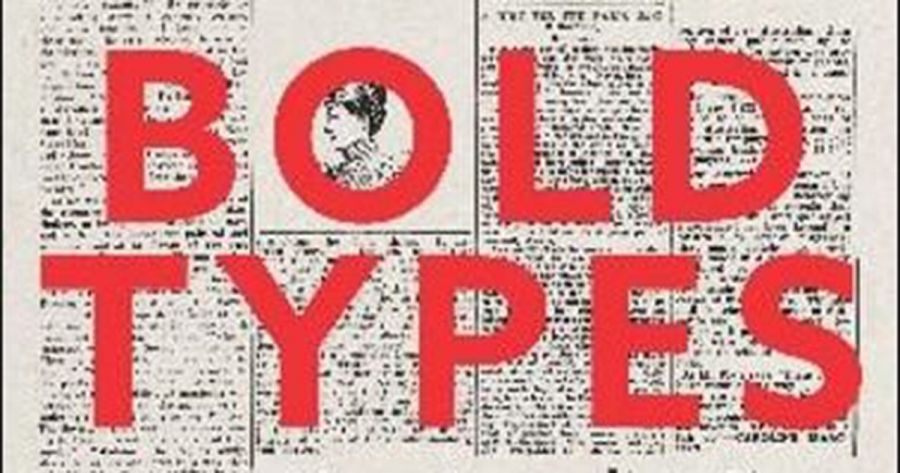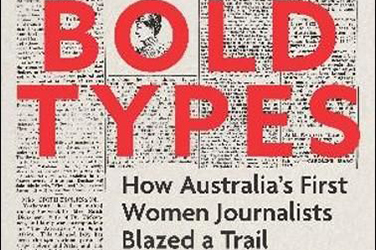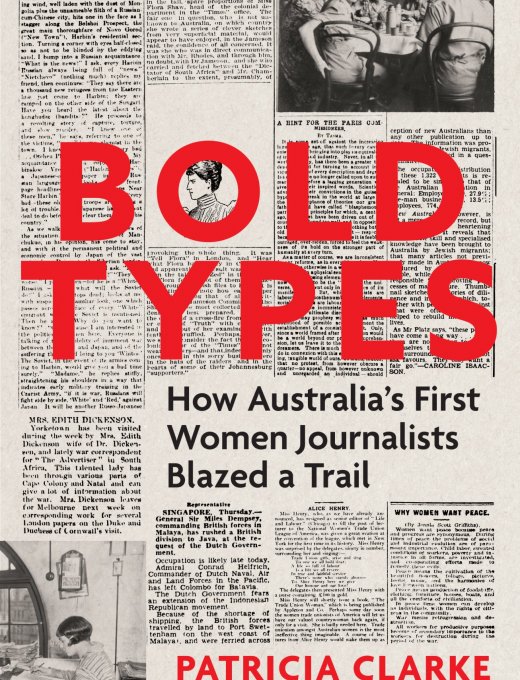
- Free Article: No
- Contents Category: History
- Review Article: Yes
- Article Title: Blazing a trail
- Article Subtitle: A transnational study of journalism
- Online Only: No
- Custom Highlight Text:
After she left journalism, Patricia Clarke turned to researching and writing books, beginning with The Governesses in 1985. Bold Types is her fourteenth book. The Canberra writer was a familiar figure at media history and other conferences, and in the National Library of Australia reading rooms, until Covid-19 at least. Her books, augmented by dozens of articles and conference papers, focus mainly on the lives, careers and letters of Australian women, especially writers and journalists. Clarke also writes about the history of her city, Canberra, an interest reflected in some of the fourteen entries she has produced for the Australian Dictionary of Biography. The ninety-six-year-old has devoted nearly ‘half a lifetime’ (to borrow the title of one of her tomes, about Judith Wright) to historical endeavours.
- Featured Image (400px * 250px):

- Alt Tag (Featured Image): Bridget Griffen-Foley reviews 'Bold Types: How Australia’s first women journalists blazed a trail' by Patricia Clarke
- Book 1 Title: Bold Types
- Book 1 Subtitle: How Australia's first women journalists blazed a trail
- Book 1 Biblio: National Library of Australia, $34.99 pb, 256 pp
- Book 1 Cover Small (400 x 600):

This book is very much a transnational study, journalism being a peripatetic profession. Several of Clarke’s subjects were born in other parts of the British empire: New Zealand, Fiji, and of course England. Jennie Scott Griffiths came from Texas, while Caroline Isaacson brought a European sensibility to her journalism. Some women relocated to Australia with husbands and children, and turned to newspaper and magazine work to support their families. Of Clarke’s nineteenth-century women, Anna Blackwell reported from Paris for The Sydney Morning Herald, and Flora Shaw toured the British colonies, including Australia, for the London Times. Most of the later women featured in Bold Types were Australian-born.
Each of the main chapters in this attractively designed book features a black-and-white photograph of the journalist, a summary paragraph about her career, and a section on ‘early life and background’, focused on family, social circumstances, and routes into journalism. Most chapters are centred around a key episode or episodes in the woman’s career, and the women’s ‘gender-defying achievements’. The writing is lively and engaging. Subheadings make life trajectories easy to follow (although some sections are too short, at just a paragraph).
The women appear as journalists, editors, publishers, owners, and business managers. Some wrote under pseudonyms, including ‘Tasma’, ‘Vesta’, ‘Viola’, ‘Lynka’, and ‘Margot Parker’. When Frances Taylor launched the monthly Woman’s World in 1921, she kept costs down by writing a considerable part of the magazine herself, using multiple pseudonyms!
Several of the women, led by Alice Henry, were feminists, pacifists, and activists. A smaller number were conservative. Here is Shaw (a ‘Lady from London’) writing in her diary about the Queensland unionist Drake Wood, a year after the 1891 shearers’ strike:
One-eyed hare-lipped with the narrow brainless forehead of degraded races, false teeth prominently white in a countenance naturally sullen, bloated [and] reddened by circumstance. The very scum of the earth he looked … This idiot with neither brains, eloquence nor character is a paid ‘representative of labour’.
Stella Allan (‘Vesta’) was appointed to the conservative Melbourne Argus in 1908 to write and edit a women’s section. Newspapers and periodicals were increasingly printing local news for and about women, alongside an explosion of illustrated advertising. While this opened a larger and more regular avenue of employment for women, Clarke shows how opportunities for women in general reporting contracted, and women were relegated to work on the women’s pages. Radical in her youth, Allan became an Establishment figure who edited the women’s section of the Argus for three decades, while also offering exemplary training to the women she employed.
Some of the journalists in Bold Types have been written about before, whether by Clarke herself or by other scholars such as Jeannine Baker. Some have been honoured by the Australian Media Hall of Fame, which has drawn in part on Clarke’s pioneering efforts over decades, or are included in the website The Women’s Pages: Australian Women and Journalism since 1850, part of the Australian Women’s Archive Project. Bold Types leverages – and at times extends on – prodigious research, and is an important and accessible work of synthesis for women journalists (including the Guardian’s Amy Remeikis, who wrote the introduction), as well as our daughters and indeed all Australians.
An extraordinary range of journalistic, organisational, entrepreneurial, and interpersonal skills is on display in this book. The thirteen women we meet battled conservative proprietors, antagonism from male journalists, precarious employment, low gradings and pay, and child-bearing and care.
Bold Types concludes with a substantial epilogue about Clarke’s own career, which began with the Australian News and Information Bureau in 1951. She joined the Australian Journalists’ Association when her articles began to be published, but came to realise that the achievement of equal pay was largely negated by women being employed on lower rungs of the profession, with no easy route to promotion. In the early 1960s, having had her first child, Clarke chose to work as a casual journalist with the press gallery for the ABC. With the afternoon and night shift suiting her family obligations, she was largely confined to news, a ‘career backwater’. The conditions of employment, she writes, were often more important for women than the pay.
It is gratifying to learn that my commissioning Clarke to write the major entry on women for A Companion to the Australian Media in 2014 inspired even more research and also helped to prompt the development of this welcome book. Undertaking that entry led Clarke to conclude that the public profile of notable women in the Australian media, especially in broadcasting, disguises the fact that women still struggle to attain real influence in decision-making roles.


Comments powered by CComment